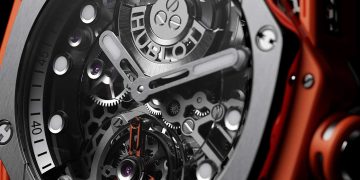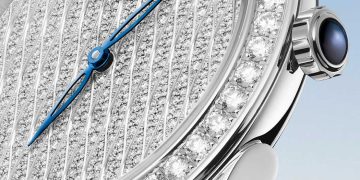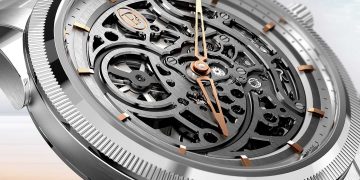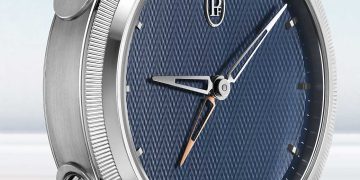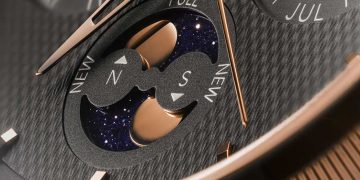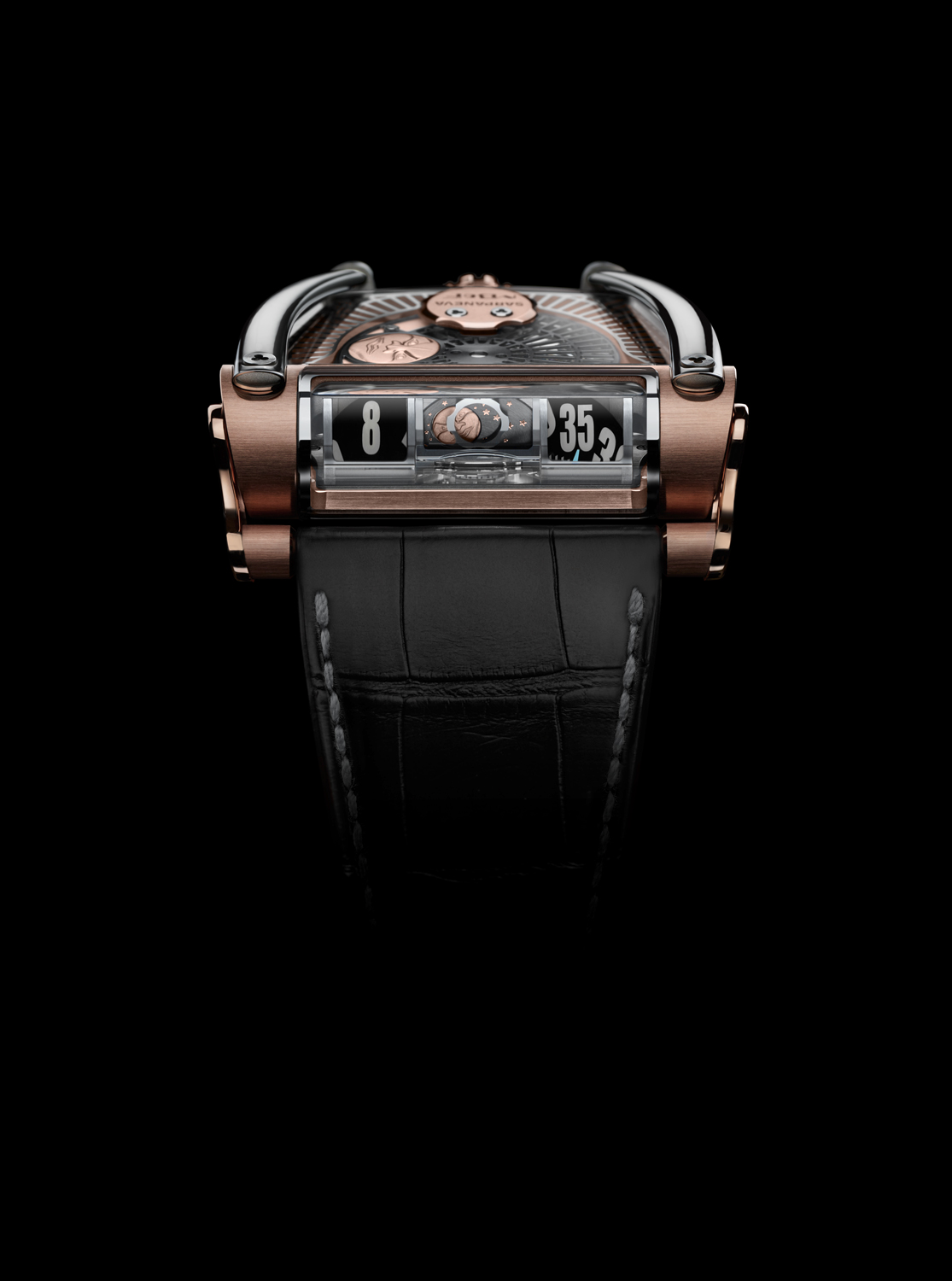
As strange as it might sound, moonlight doesn’t exist. It is an illusion, and even the word “moonlight” is misleading. The moon gives off no light of its own, it only reflects light from the sun. In effect, moonlight is sunlight, projected onto Earth via the moon.
If there’s one person who can be relied upon to thoroughly grasp this concept, it’s Stepan Sarpaneva, the independent Finnish watchmaker whose work has become synonymous with the moonphase display. Little wonder, then, that the second collaboration between MB&F and Stepan Sarpaneva has resulted in a horological creation that occupies the same elusive space as moonlight, somewhere between illusion and reality. The MB&F MoonMachine 2 brings us the world’s first projected moonphase display.
MoonMachine 2 comes housed in the case of Horological Machine Nº8, the first MB&F creation to possess two design icons of the Horological Machine collection: the battle-axe rotor, and the heads-up time display first seen in Horological Machine Nº5. The stripped-down case construction of HM8 emphasised the illusory nature of the projected hours and minutes, and MoonMachine 2 uses the same mechanism to highlight the visual impact of a moon disc appearing in a space too small to fully contain it.
The projection is accomplished via an optical prism, which refracts the hours, minutes and moon discs in their flat positions to appear as if they are perpendicular to the engine. The prism is cut to magnify the hours and minutes by 20 percent for greater readability, but not for the moonphase display, which is at risk of distortion if magnified. The case of MoonMachine 2 is 0.5mm thicker than that of HM8, to accommodate the additional moon disc, and has a pusher on the side for quick adjustment of the moonphase display.
The battle-axe rotor of HM8 has been transformed into an openworked radial web of titanium, echoing the design vocabulary of Stepan Sarpaneva’s best-known work. The sapphire crystal pane framing the top of the MoonMachine 2 engine has been metallised in a similar pattern and draws focus to the variable sheen of the brushed titanium rotor as it rotates.
There are three instances of the immediately recognisable Sarpaneva moon in MoonMachine 2, its piercing eyes and pointed features based on Stepan Sarpaneva’s own face. Two of the Sarpaneva moons are mounted on the moon disc, taking it in turns to cycle under a Korona ring — another Sarpaneva design hallmark — to indicate the phase of the moon. The third is mounted on the winding rotor. Each moon is made of gold and finished by hand, which is incredibly challenging at their size. The two small moons on the moon disc measure 4.5mm in diameter and 0.35mm in thickness, while the rotor moon is 8.5mm wide and 0.45mm thick. The hand-finishing process is extremely delicate and the failure rate is very high, meaning that each completed moon will be the result of multiple work sequences.
A Korona-framed gold plaque commemorating the collaboration between Stepan Sarpaneva and MB&F is affixed on the sapphire crystal pane, adjacent to the crown. According to MB&F founder Maximilian Büsser: “We would never have done MoonMachine 2 on our own, and Stepan would never have done it on his own. But that’s what I love about Performance Art pieces — the chance to expand the MB&F universe in unexpected ways.”
Stepan Sarpaneva’s take on the project is illuminatingly personal. “Max and I have a very long friendship, and there is a lot of honesty between us. He pushes me to do better and gives me the most challenging projects. This time the challenge was to augment HM8, which is not easy. But it’s fun, and that’s why I say yes to any project with Max.”
MoonMachine 2 is available in three limited editions of 12 — one in full titanium with white gold moons and a light-blue sky, one in blackened titanium with white gold moons and a dark-blue sky, and one in red gold and titanium with red gold moons and an anthracite sky.
MOONMACHINE 2 IN DETAIL
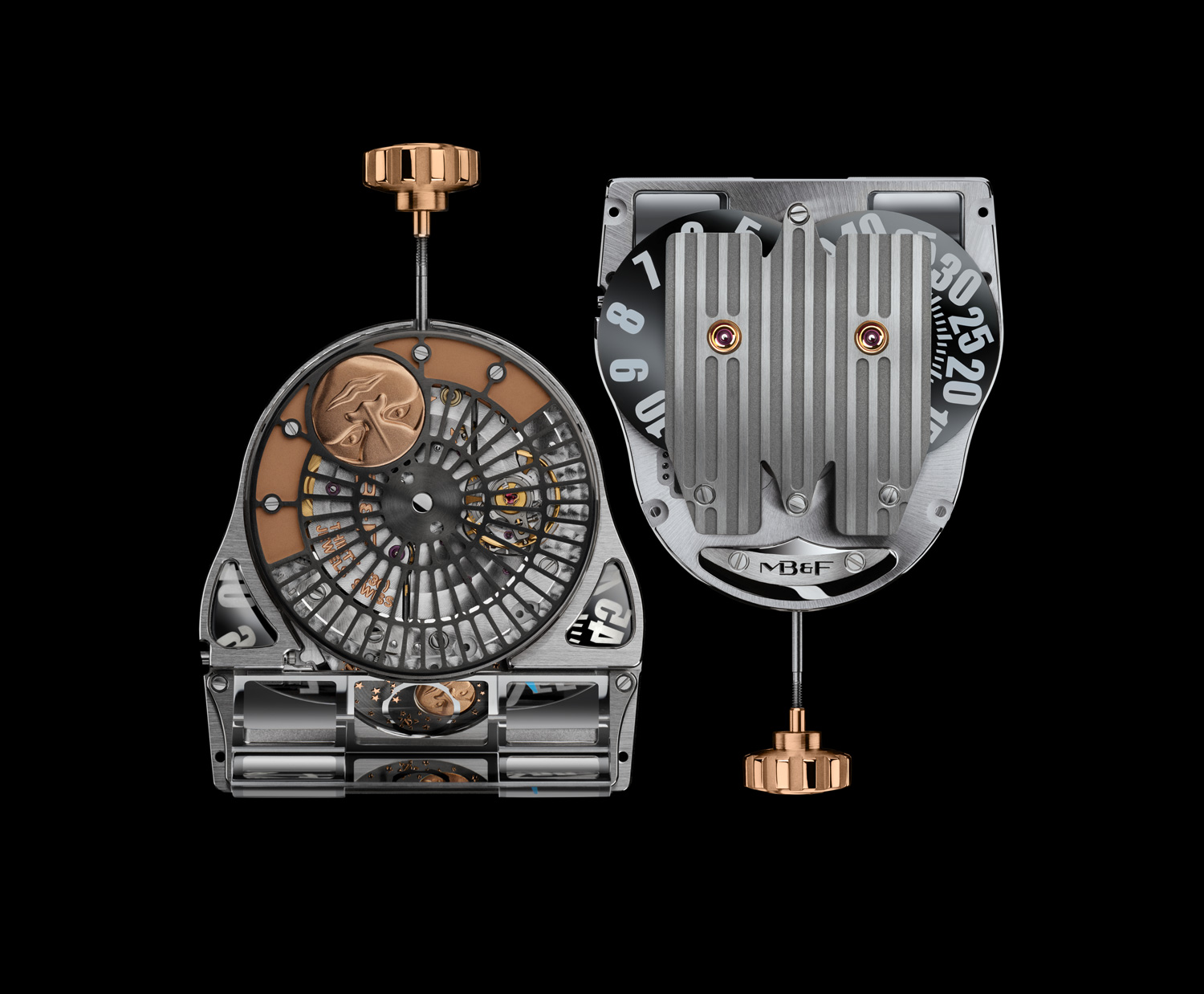
ABOUT HOROLOGICAL MACHINE Nº8 AND THE HM8 ENGINE
First launched in 2016 as the adrenaline-laced “Can-Am”, Horological Machine N°8 is an evolution of the heads-up time display that MB&F debuted five years ago in the HM5 “On the Road Again” and subsequently refined in the 2015 HMX.
The HM8 engine is a compact, in-house developed movement built on a Girard-Perregaux base, with a jumping hour disc and a running minutes disc. Optical prisms fixed over the discs at specific points capture the time, refracting and magnifying the numerals so they can be read on a vertical plane. Horological Machine N°8 is completely pared down in terms of exterior cladding, not just to emulate the bare-all aesthetic of Can-Am racecars, but also to allow as much light as possible to flood the prisms and maximise the clarity of display.
Additional references to the source material include the slender titanium roll bars flanking the crown, sweeping forwards to anchor the time display cylinder. Motoring enthusiasts will immediately recognise the “oil sumps” visible through the sapphire crystal panes on the underside of HM8 — these are functional as well as decorative, providing access to the pivots of the hour and minute discs for tribological maintenance.
CHALLENGES OF THE MOONPHASE IN MOONMACHINE 2
The gold moons of MoonMachine 2 are the smallest ever created by Stepan Sarpaneva, whose timepieces have, on average, gold moons that are 10mm in diameter and 0.5mm in thickness. In comparison, MoonMachine 2 has one moon that is 8.5mm in diameter and 0.45mm in thickness, and two exceptionally small moons that are 4.5mm wide and 0.35mm thick.
The smallest gold moons are first stamped to a thickness of 0.55mm, and then reduced by hand-turning on a lathe to bring their height down until just under 0.4mm. They are then manually ground down with a stone tool until they are 0.35mm at their thickest point, then matt blasted to create an even finish. At their thinnest point, around the eyes, the moons can be as little as 0.07mm thick, almost like a gold foil, and the slightest pressure will cause the soft gold to perforate and the moon will have to be discarded.
The 4.5mm-wide moons are at the very limits of what can be worked on by hand — any smaller and the features of the moon’s face will no longer be clearly visible. As it is, they are hardly discernible by touch, even by the experienced fingertips of Stepan Sarpaneva and his team. These near-impossible dimensions are necessitated by the constraints of the MoonMachine 2 case and the tolerances needed to fit under the optical prism while providing adequate clearance for the hour and minute discs.
On average, eight moons out of every 10 are eventually discarded for not meeting the high standards set by Sarpaneva and MB&F. Furthermore, the small moons come in pairs, since there are two on each moon disc, so they have to be perfectly matched as well as perfectly finished.
MB&F AND STEPAN SARPANEVA
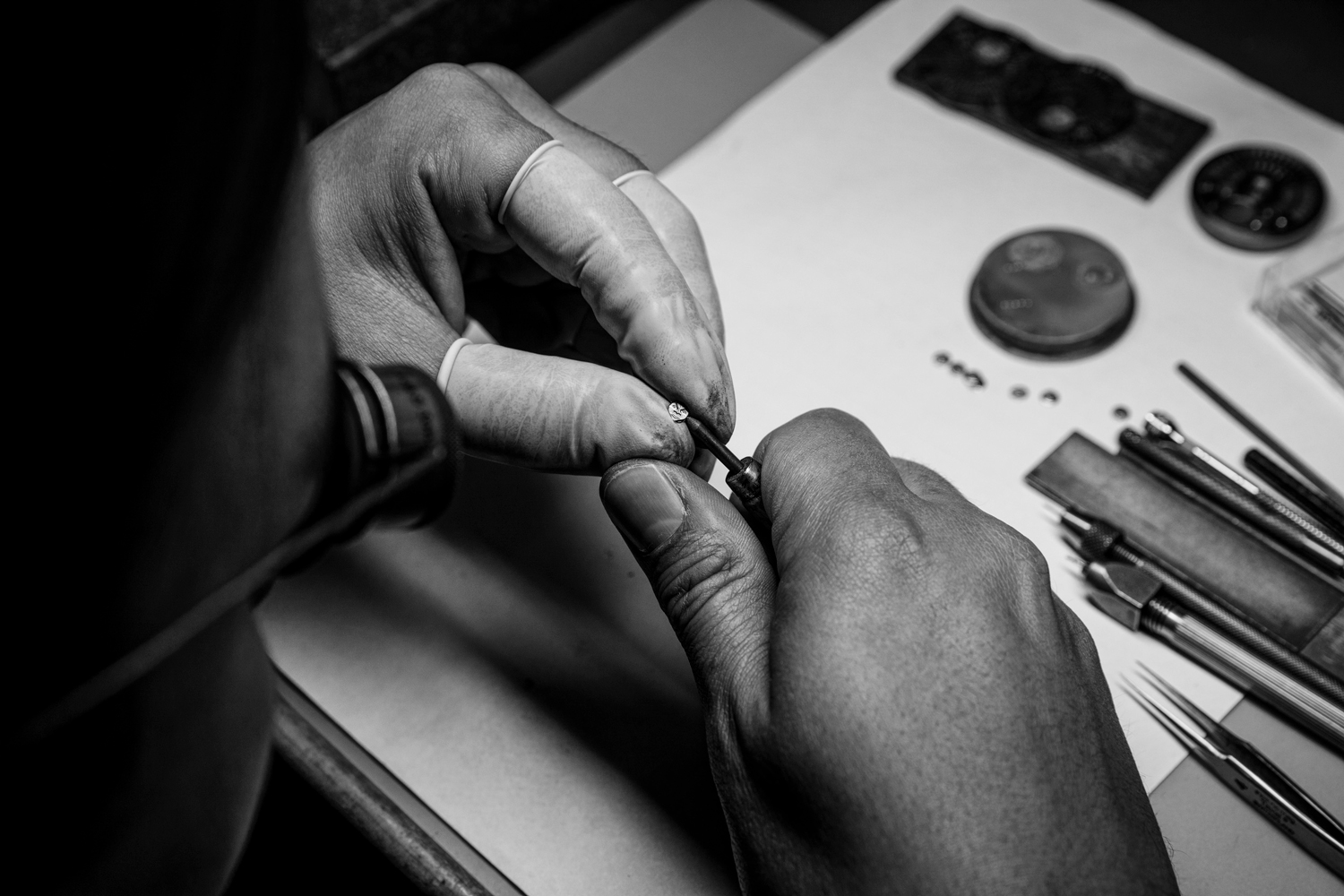
In 2012, when the first MoonMachine was presented, the MB&F-Sarpaneva connection was the first time that a piece of MB&F Performance Art had been produced in conjunction with a watchmaker, and it continues to hold a special place in the MB&F pantheon.
The evolution of this partnership is represented by the advancement between the first MoonMachine, which was based on the HM3 Frog, and MoonMachine 2. Although they both utilise the rotor and moonphase display as locus points for incorporating the Sarpaneva contribution, MoonMachine 2 takes this seemingly straightforward addition and gives it an exponential bump by turning it into a world premiere — the first ever projected moonphase display.
MB&F founder Maximilian Büsser and Sarpaneva began talking of a sequel to MoonMachine not too long after its release, when HM5 was released and Stepan suggested that a moonphase indication could go between the hours and minutes of the first Horological Machine to use the optical prism display. It wasn’t until HM8, however, four years after MoonMachine, that this became more than a suggestion and laid the foundations for MoonMachine 2.
ABOUT STEPAN SARPANEVA
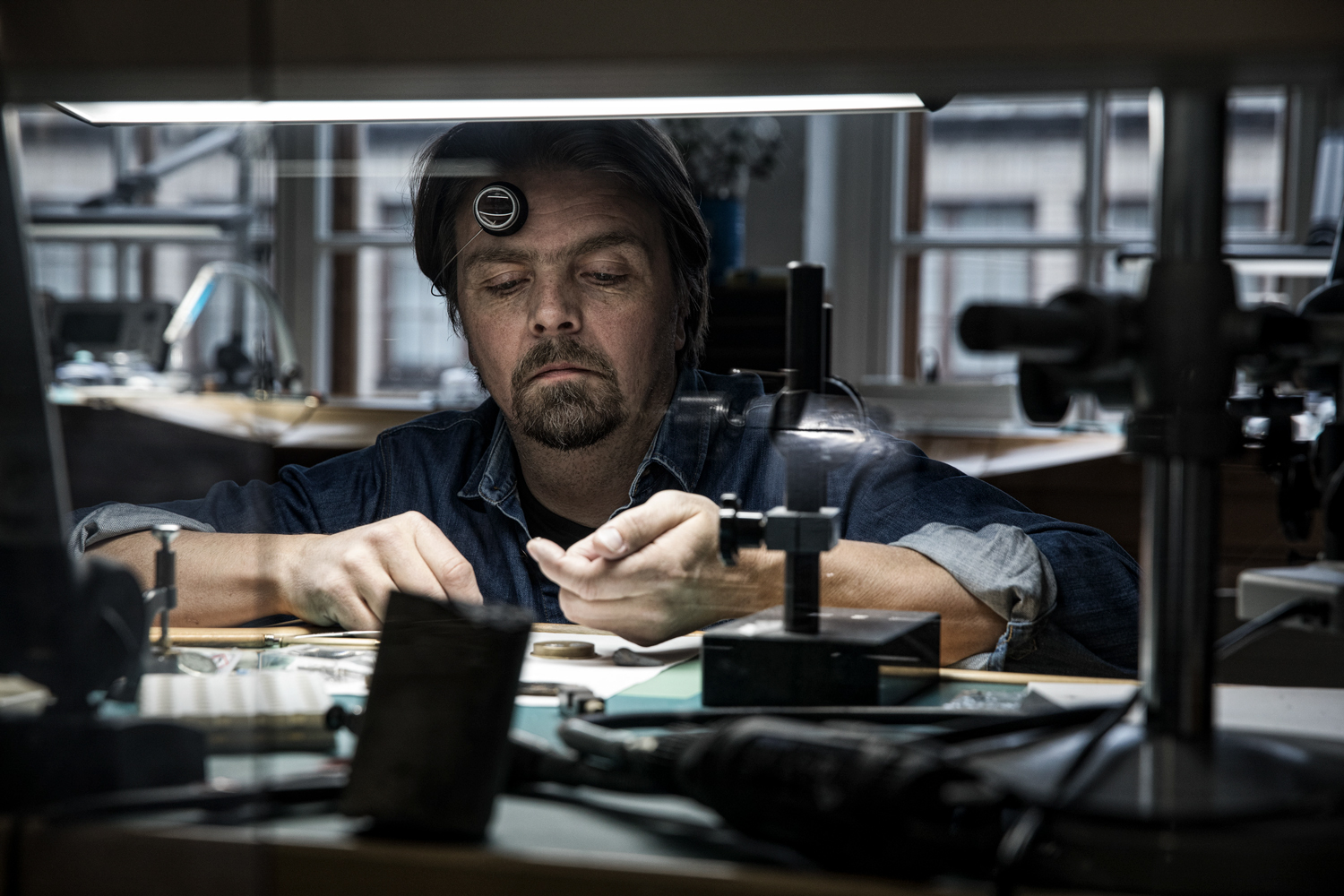
Stepan Sarpaneva was born in 1970 to a Finnish family with a long heritage of craftmanship. Son of jewellery designer Pentti Sarpaneva, Stepan was brought up to be a talented designer and craftsman.
Sarpaneva first graduated from the Finnish School of Watchmaking and then moved to Switzerland to further his studies at WOSTEP (Watchmakers of Switzerland Training and Educational Program). In 1994, he began work for several prestigious watch companies including Piaget, Parmigiani, Vianney Halter and Christophe Claret. During those 10 years in Switzerland, Sarpaneva specialised in the crafting of complicated timepieces.
Perfectionism, enthusiasm and an infinite passion for watchmaking inspired Sarpaneva to create watches of his own. In 2003 he founded his own company in Helsinki, Finland where he individually handcrafts each watch at the workshop.
Stepan Sarpaneva first got to know Maximilian Büsser in 1999 and their first collaboration was the 2012 MoonMachine, built on the framework of the HM3 Frog. Sarpaneva is the first watchmaker to collaborate on an MB&F Performance Art piece, and his work is characterised by his love of the cosmos. Common features include the moonphase complication and design motifs such as stars and the Korona, Sarpaneva’s own stylised representation of the Sun’s plasma halo.
MOONMACHINE 2 TECHNICAL SPECIFICATIONS
MOONMACHINE 2 is based on a specially configured HM8; the projector moon complication was imagined, designed and created by Stepan Sarpaneva. It is available in three limited editions of 12 pieces each.
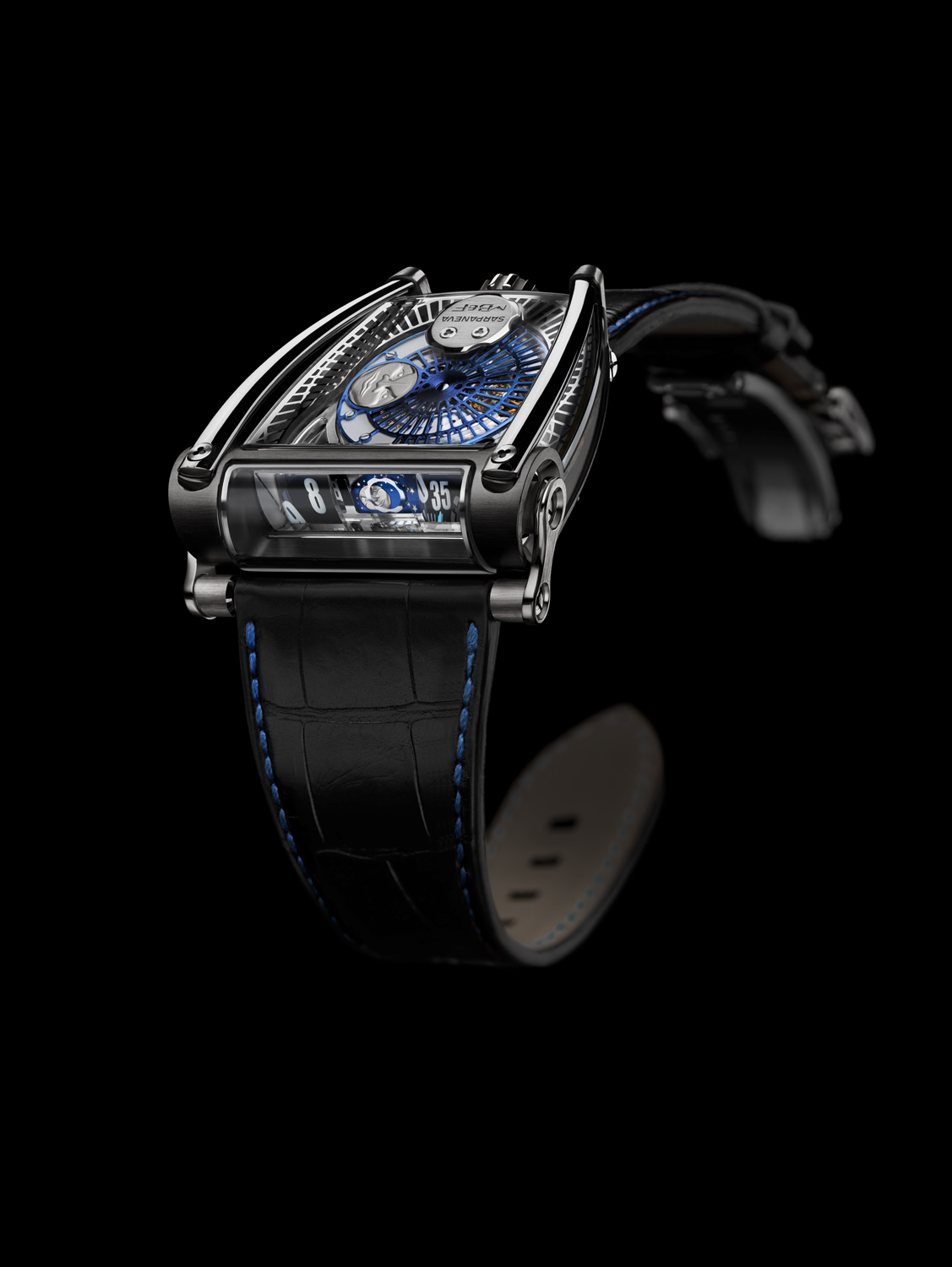
Engine
Three-dimensional engine conceived and developed by MB&F from a Girard-Perregaux base calibre, with moonphase complication by Stepan Sarpaneva
Automatic PVD coated titanium rotor with Sarpaneva gold moon
Power reserve: 42 hours
Balance frequency: 28,800bph / 4Hz
Number of components: 293
Number of jewels: 30
Functions/indications
Bi-directional jumping hours, trailing minutes and moon phase displayed by one optical prism that reflects vertically. The hour and minutes segments are magnified by 20%.
The dual moons rotate under a Korona ring and are corrected by a pusher.
Case
Three limited editions of 12 pieces each:
- Natural titanium case, white gold moon faces, light-blue sky;
- Black titanium case, white gold moon faces, dark-blue sky;
- Red gold and titanium case, red gold moon faces, anthracite sky.
Dimensions: 49 mm x 51.5 mm x 19.5 mm
Number of components: 59 components
Water resistance: 30 m / 90′ / 3 atm
Sapphire crystals
All sapphire crystals – front, back, top, bottom – treated with anti-reflective coating on both faces. Top plate with special metallisation.
Strap & buckle
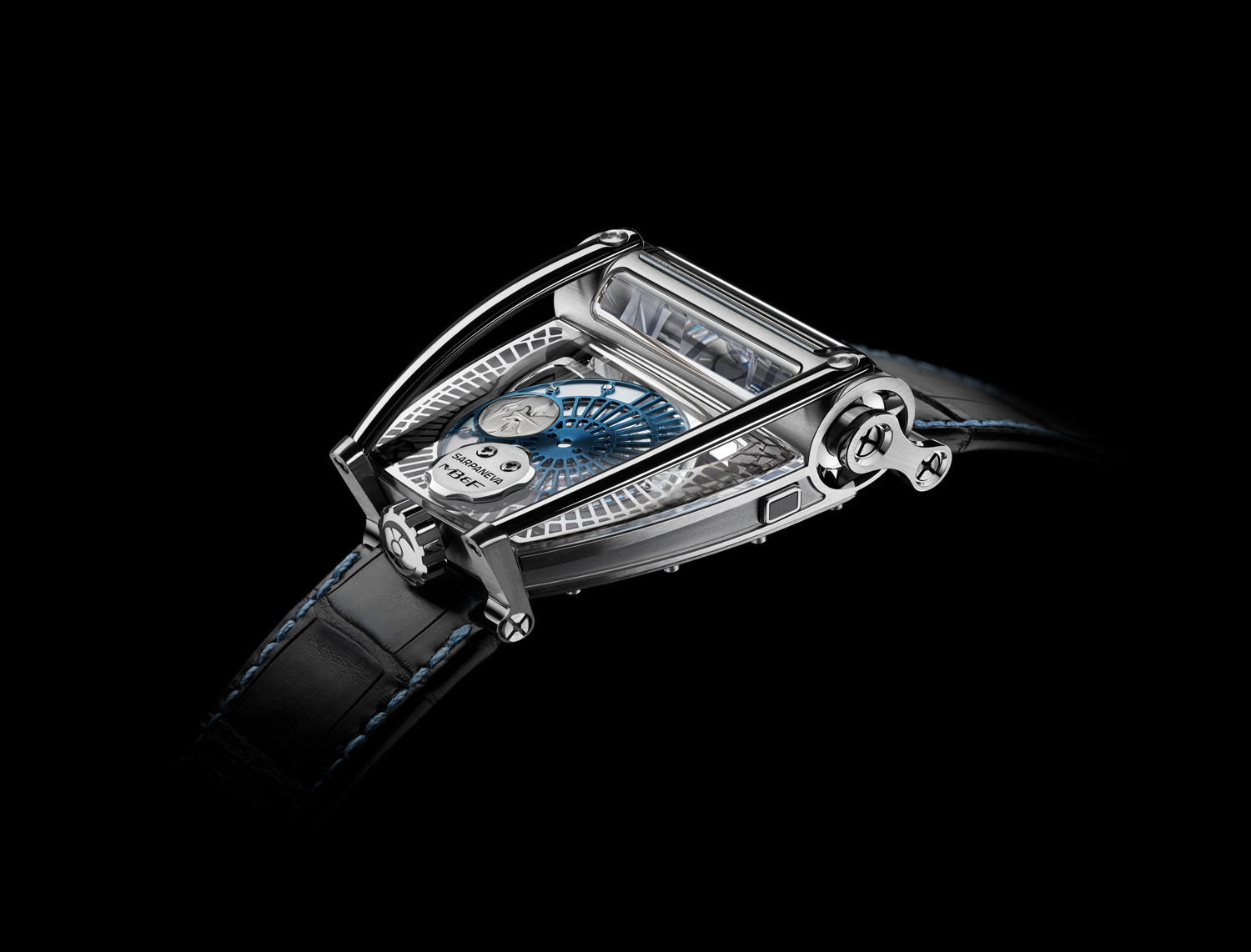
– Titanium version: Light Blue hand-stitched Black alligator strap with titanium folding buckle.
– Black Titanium version: Dark Blue hand-stitched Black alligator strap with titanium folding buckle.
– Red Gold version: Grey hand-stitched Black alligator strap with red gold and titanium folding buckle.
‘FRIENDS’ RESPONSIBLE FOR MOONMACHINE 2
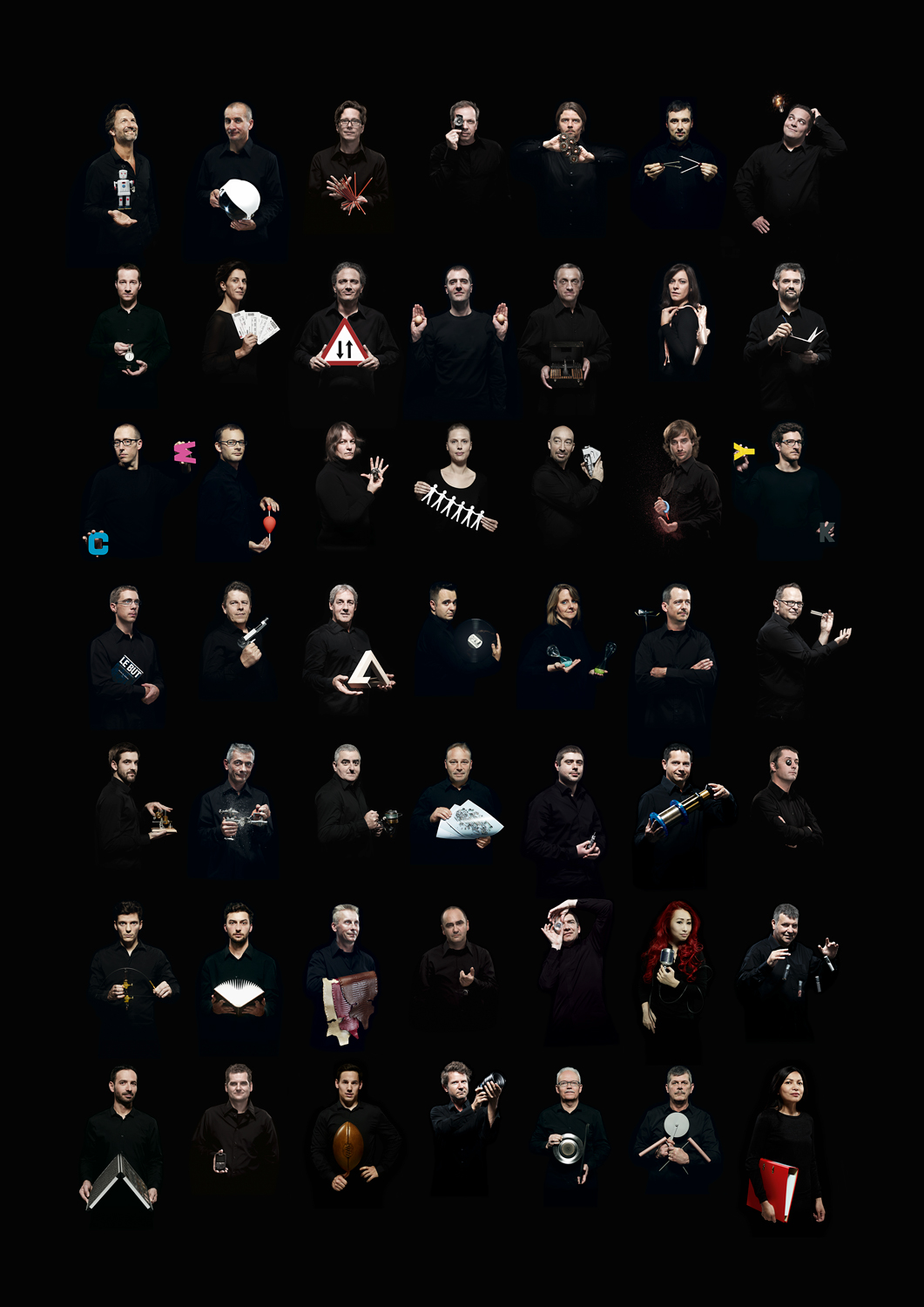
Concept: Maximilian Büsser / MB&F
Horological Machine design: Eric Giroud / Through the Looking Glass and Stepan Sarpaneva
Technical and production management: Serge Kriknoff
R&D: Guillaume Thévenin and Ruben Martinez / MB&F and Stepan Sarpaneva
Movement development: Guillaume Thévenin / MB&F and Stepan Sarpaneva
Base movement: Stefano Macaluso / Girard Perregaux
Case: Riccardo Pescante / Les Artisans Boîtiers
Precision turning of wheels and axes: Dominique Guye / DMP horlogerie, Yves Bandi / Bandi and Jean-François Mojon / Chronode and Le Temps retrouvé
Mainspring: Alain Pellet / Elefil
Plates and bridges: Benjamin Signoud / AMECAP
Rotor: Marc Bolis / Systech Analytics, Pierre-Albert Steinmann / Positive Coating
Hand-finishing of movement components: Jacques-Adrien Rochat and Denis Garcia / C.-L. Rochat
Movement assembly: Didier Dumas, Georges Veisy, Anne Guiter, Emmanuel Maitre and Henri Porteboeuf / MB&F
In-house machining: Alain Lemarchand and Jean-Baptiste Prétot / MB&F
Quality control: Cyril Fallet / MB&F
After-sales service: Thomas Imberti / MB&F
Sapphire crystals: Sebal and Novocrystal
Metallisation of sapphire crystals: Roland Rhyner / Econorm
Discs for hours – minutes and optical prisms: Jean-Michel Pellaton / Bloesch
Stars on moon disc: GB Microfab
Golden Moon: Stepan Sarpaneva
Crown: Cheval Frères
Buckle: Dominique Mainier / G&F Châtelain
Strap : Olivier Purnot / Camille Fournet
Case: Olivier Berthon / ATS Atelier Luxe
Logistics and production: David Lamy and Isabel Ortega / MB&F
Marketing & Communication: Charris Yadigaroglou, Virginie Toral and Juliette Duru / MB&F
M.A.D.Gallery: Hervé Estienne / MB&F
Sales: Sunita Dharamsey and Rizza Naluz / MB&F
Graphic Design: Samuel Pasquier / MB&F, Adrien Schulz and Gilles Bondallaz / Z+Z
Horological Art photography: Maarten van der Ende
Portrait photography: Régis Golay / Federal
Webmasters : Stéphane Balet / NORD Magnétique, Victor Rodriguez and Mathias Muntz / NIMEO
Film : Marc-André Deschoux / MAD Lux
Texts : Suzanne Wong / REVOLUTION Switzerland
MB&F – Genesis of a Concept Laboratory
In 2015, MB&F celebrated its 10th anniversary – and what a decade it was for the world’s first ever horological concept laboratory: 10 years of hyper-creativity; 11 remarkable calibres forming the base of the critically acclaimed Horological Machines and Legacy Machines for which MB&F has become renowned.
After 15 years managing prestigious watch brands, Maximilian Büsser resigned from his Managing Director position at Harry Winston in 2005 to create MB&F – Maximilian Büsser & Friends. MB&F is an artistic and micro-engineering laboratory dedicated to designing and crafting small series of radical concept watches by bringing together talented horological professionals that Büsser both respects and enjoys working with.
In 2007, MB&F unveiled its first Horological Machine, HM1. HM1’s sculptured, three-dimensional case and beautifully finished engine (movement) set the standard for the idiosyncratic Horological Machines that have followed: HM2, HM3, HM4, HM5, HM6, HM7, HM8 and HMX – all Machines that tell the time, rather than Machines to tell the time.
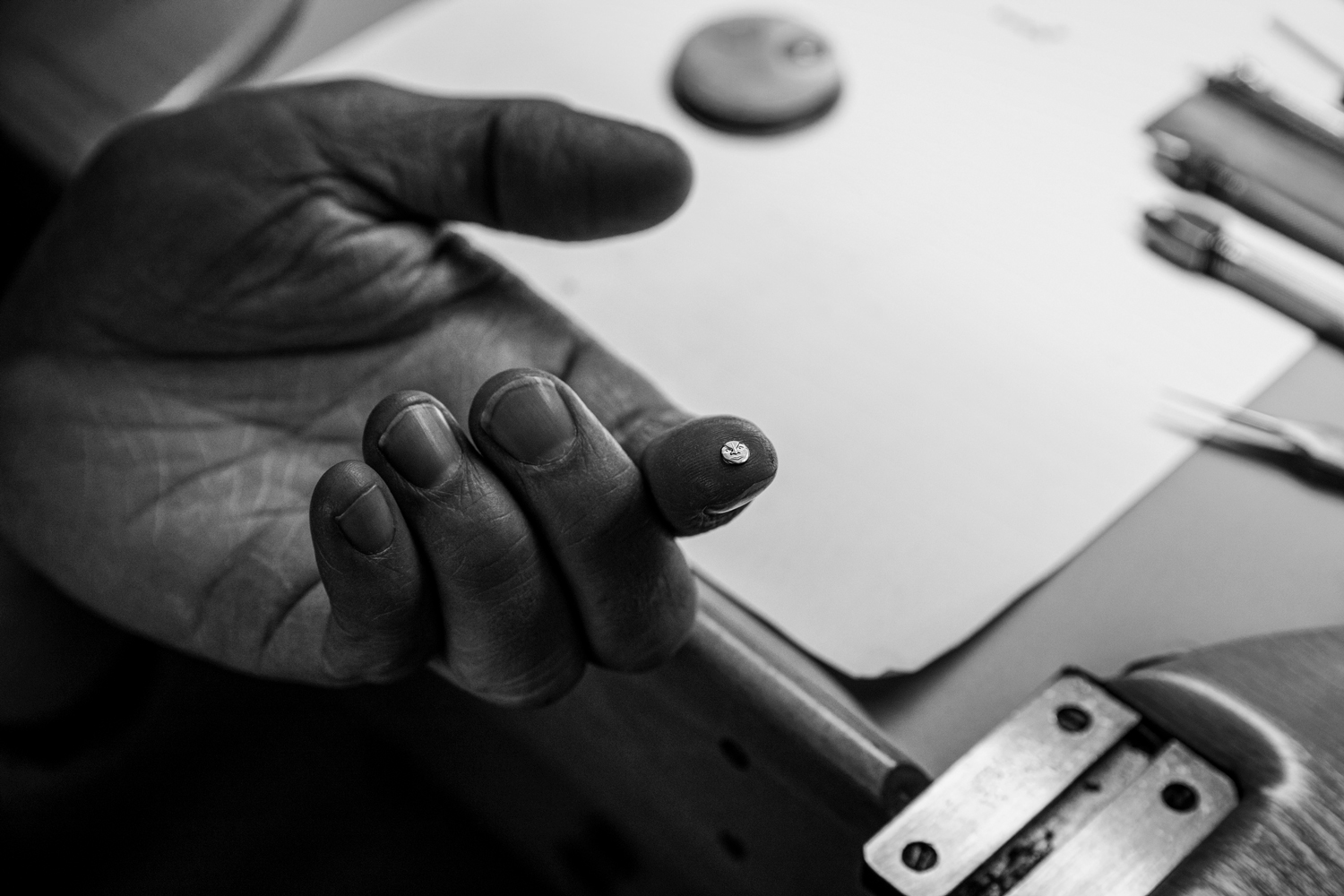
In 2011, MB&F launched its round-cased Legacy Machine collection. These more classical pieces – classical for MB&F, that is – pay tribute to nineteenth-century watchmaking excellence by reinterpreting complications from the great horological innovators of yesteryear to create contemporary objets d’art. LM1 and LM2 were followed by LM101, the first MB&F Machine to feature a movement developed entirely in-house. The year 2015 saw the launch of Legacy Machine Perpetual featuring a fully integrated perpetual calendar. LM SE was launched in 2017. MB&F generally alternates between launching contemporary, resolutely unconventional Horological Machines and historically inspired Legacy Machines.
As well as Horological and Legacy Machines, MB&F has created space-age MusicMachines (1, 2 and 3) in collaboration with music box specialist Reuge; and with L’Epée 1839, unusual clocks in the form of a space station (Starfleet Machine), a rocket (Destination Moon), a spider (Arachnophobia), an octopus (Octopod) and three robot clocks (Melchior, Sherman, and Balthazar). In 2016, MB&F and Caran d’Ache created a mechanical rocket-pen called Astrograph.
And there have been distinguished accolades reminding us of the innovative nature of MB&F’s journey so far. To name a few, there have been no less than 4 Grand Prix awards from the famous Grand Prix d’Horlogerie de Genève: in 2016, LM Perpetual won the Grand Prix for Best Calendar Watch; in 2012, Legacy Machine No.1 was awarded the Public Prize (voted for by horology fans) and the Best Men’s Watch Prize (voted for by the professional jury). In 2010, MB&F won Best Concept and Design Watch for the HM4 Thunderbolt. In 2015 MB&F received a Red Dot: Best of the Best award – the top prize at the international Red Dot Awards – for the HM6 Space Pirate.

